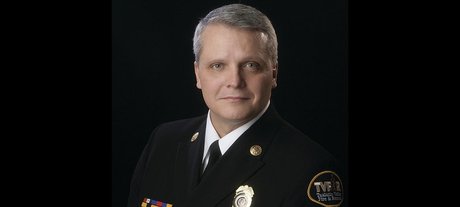Building a public safety broadband network — the US experience

With overwhelming support from the public safety community, the US Congress passed legislation in 2012 to establish the First Responder Network Authority (FirstNet). Signed into law by President Obama, the legislation tasked FirstNet with ensuring the building, deployment and operation of the first high-speed, nationwide wireless network dedicated to public safety. This was a huge win for first responders in the US and for the communities they serve.
As Australia moves forward with plans for a public safety broadband network, you will undoubtedly face many tough decisions on the best path forward in your country. Regardless of which way you go, I believe there are at least three success factors that can be universally applied to any public safety network, in any country: the public safety community must remain unified in its support for the network; the network must provide first responders with priority access; and the public safety community must be involved in all facets of the network.
A unified public safety community. The FirstNet network came into focus thanks to a unified public safety voice. In the years leading up to passage of the law, an advocacy group called the Public Safety Alliance (PSA) brought together the full spectrum of public safety interests to advance support for the network in the states and the US Congress. Today, thanks to the PSA’s contributions, the public safety community continues to be actively involved in the development of this network. Through forums such as the Public Safety Advisory Committee and the FirstNet consultation process, they continue to articulate their needs for the network and provide FirstNet with advice and expertise.
Priority and preemption. Public safety personnel will be the primary users of the FirstNet network. Given the importance of their mission, it will be critical for them to connect to the network when they need it most — during emergencies. Currently, commercial networks do not offer this type of priority access to public safety users. With that in mind, FirstNet is building priority and preemption into the network, ensuring public safety users are first in line to access the network during times of heavy usage, and that there is ample bandwidth to support their voice, video and data needs.
Public safety outreach. Public safety stakeholders aren’t just a group to FirstNet; they are our partners and customers. Their lives and the communities they serve will be impacted by the success of the network. To that end, public safety outreach has been a top priority since day one, and we have worked to involve first responders at all levels of government every step along the way. We have worked hard to create opportunities for public safety stakeholders to help shape the network and we will continue to do so even when the network is up and running.
These and other factors have enabled FirstNet to make considerable progress. We recently achieved a major milestone with the release of the Request for Proposals (RFP) to form a public-private partnership to build the network. This puts public safety stakeholders an RFP-award-and-construction cycle away from having their own network. While we still have much work to do, getting to where we are today could not have been possible without our commitment to, and the involvement of, the public safety community.
On behalf of FirstNet, we wish Australia much success with its network and stand ready to assist you along the way.
Why P25 technology remains a good fit for public safety communications
Digital LMR technology ensures police officers, firefighters and emergency management teams can...
From past to present: leveraging satellite data for better disaster resilience
Whether monitoring flood-prone regions or assessing wildfire-prone landscapes, historical...
Lancashire Police adds in-car video to full vehicle fleet
Motorola Solutions' M500 in-car video solution observes a vehicle's environment from...





